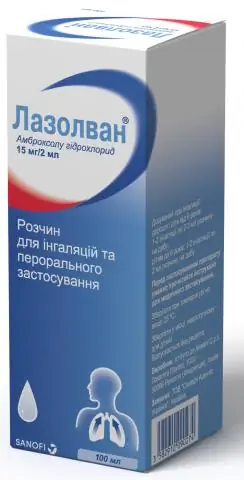Periostitis
The content of the article:
- Causes of periostitis
- Forms of the disease
- Symptoms
- Features of the course of periostitis in children
- Diagnostics
- Periostitis treatment
- Possible complications and consequences
- Forecast
- Prevention
Periostitis is a generalized name for acute and chronic diseases of various localization, manifested by aseptic or infectious inflammation of the periosteum (periosteum).
The periosteum is a thin connective tissue film that covers the outer surface of the bone. Due to it, bone growth is carried out in width, nutrition and regeneration of bone substance. The periosteum consists of two layers, is rich in blood and nerve vessels and is often tightly fused with nearby tissues, which determines the specificity of inflammatory processes: inflammation, arising in one of the periosteal layers, rather easily spreads to the adjacent layer, bone substance or soft tissues.
Periostitis can affect almost any bone, but most often develops in the bones of the thigh and lower leg, calcaneus, upper and lower jaw, nasal bones, bones of the upper limb.

Periostitis - inflammation of the periosteum (periosteum)
Causes of periostitis
Inflammation of the periosteum can be both infectious and aseptic (without the participation of pathogenic microorganisms).
The main causes of periostitis are:
- traumatic injury to the periosteum due to bone fracture or injury to nearby soft tissues;
- aseptic inflammation of the periosteum from excessive stress on the tendons of the adjacent muscles;
- spread of the inflammatory process from nearby structures;
- chronic mechanical irritation of the periosteum;
- hematogenous metastasis of a purulent infection with sepsis;
- pathological proliferation of the subperiosteal tissue;
- infectious and inflammatory diseases (tuberculosis, syphilis, osteomyelitis, etc.).
Forms of the disease
Depending on the causes of the disease, periostitis can be specific (for example, tuberculous or syphilitic periostitis) and non-specific.
According to the nature of the course, acute and chronic periostitis are distinguished.
With periostitis of the upper jaw in 2/3 of patients, acute sinusitis is determined due to the involvement of the paranasal sinuses, located in the thickness of the bone, in the inflammatory process
In accordance with the pathological picture, periostitis is subdivided as follows:
- simple periostitis - an acute disease of the periosteum that develops without the influence of pathogens and manifests itself by local increased blood filling, infiltration and thickening of the inflamed area;
- fibrous periostitis - pathological proliferation of connective tissue tightly adhered to the underlying bone in places of chronic trauma (for example, damage to the tibial crest with habitual trauma (in athletes, dancers), long-standing leg ulcers, etc.);
- ossifying - a bone neoplasm in the place of habitual trauma to the periosteum with the formation of osteophytes, significant thickening of bone tissue, sometimes evolving from the fibrous form of the disease;
- purulent form - characterized by a corresponding inflammation, starting with infiltration of the periosteum, caused by pyogenic microflora, can develop as a result of screening out microorganisms by hematogenous means from foci with a purulent process of a different localization. As the progression progresses, the purulent contents of the inflammatory focus exfoliate the periosteum from the bone, an abscess is formed, in an unfavorable situation, pus penetrates into the marrow cavity, soaks the surrounding soft tissues. In especially severe, malignant cases, putrefactive processes develop, the periosteum acquires a green-gray color, easily exfoliates and in places is completely destroyed, the bone is "enveloped" in necrotic masses;
- serous (mucous) form of periostitis - accumulation under the periosteum of serous exudate with fibrin filaments, single purulent inclusions, stretching, covered with a dense capsule, usually proceeds subacutely or chronically;
- the tuberculous form caused by mycobacterium tuberculosis, which entered the periosteum through the systemic circulation or from the surrounding tissues (tuberculous periostitis of the ribs), in this case, suppuration rapidly occurs, followed by purulent fusion of the bone, destruction of the periosteum;
- syphilitic form - a frequent occurrence in patients with congenital and acquired syphilis, proceeds in an ossifying or gummy form;
- actinomycotic periostitis is provoked by a radiant fungus, anaerobic proactinomycetes, with this form, loose layers form on the surface of the periosteum, and areas of increased density can form in the thickness of the bone.
In accordance with the localization of the pathological process, the mandibular periostitis and periostitis of the upper jaw, periostitis of the tibia, humerus, ribs, clavicle, etc. are distinguished.
Symptoms
The symptoms of periostitis developing in long tubular bones are very similar:
- pain on palpation of the affected area of the periosteum;
- swelling at the site of inflammation;
- during the formation of purulent periostitis, there is a characteristic fluctuation, or swelling of the inflamed area (when pressing on the swelling, a feeling of springing is determined, undulating fluctuations of liquid purulent contents);
- increased body temperature;
- when localized in the area of the joint - deterioration of its mobility;
- in some cases, there may be edema, hyperemia and an increase in the temperature of soft tissues in the projection of inflammation.

Periostitis is manifested by pain at the site of the lesion and swelling
The most common lesions of the periosteum in everyday life are periostitis of the lower jaw and periostitis of the upper jaw. In everyday life, this pathology is often referred to as a flux. Periostitis of the jaw bones often develops as a result of the introduction of infection from odontogenic (associated with the dentition) and non-odontogenic foci: carious teeth, periodontitis, alveolitis, complicated eruption of wisdom teeth, suppuration of the jaw cyst, foci of other localization. This form of periostitis is provoked more often by hypothermia, trauma, stress, depletion of the body's reserves against a background of chronic or acute diseases and other factors.
The clinical manifestations of periostitis of the lower jaw, as well as of the upper, are very diverse, their intensity depends on individual characteristics:
- soreness in the area of the causative tooth, aggravated by pressing on it or chewing;
- swelling of the soft tissues of the face;
- headache;
- sleep disorders;
- irradiation of pain in the temple, eye area, zygomatic region, chin on the corresponding side;
- increased body temperature;
- hyperemia and edema of the oral mucosa;
- deepening of the periodontal pocket in the projection of inflammation;
- rounded protrusion of the gum tissue, formed by serous or purulent contents;
- depending on the localization of the inflammatory process - swelling of the lips, smoothing of the nasolabial folds, pasty zygomatic region, lower eyelid, parotid-chewing zone, chin;
- enlargement and soreness of the parotid and submandibular lymph nodes;
- possible mobility of the affected tooth, separation of purulent contents from the carious cavity.
With periostitis of the upper jaw in 2/3 of patients, acute sinusitis is determined due to the involvement of the paranasal sinuses, located in the thickness of the bone, in the inflammatory process.
Features of the course of periostitis in children
Periostitis in children is more rapid and active. This is due to the age-related characteristics of bone tissue (insufficient mineralization, a large amount of cancellous bone substance, intense blood circulation), high elasticity and functional activity of the periosteum, pronounced hydrophilicity of soft tissues, which creates the preconditions for the development of massive edema.

In children, periostitis proceeds rapidly and actively
The imperfection of the tissue barrier and the functional immaturity of the immune system explain the rapid transition of one nosological form of the disease to another (the rapid development of a purulent form of periostitis), the severity of intoxication.
Diagnostics
The diagnosis of periostitis is established on the basis of a combination of a characteristic clinical picture, data from laboratory and instrumental research methods:
- the presence of a local painful compaction, a positive symptom of fluctuation in a purulent process, a connection with a previous injury, or the presence of a chronic disease that can provoke damage to the periosteum;
- complete blood count (leukocytosis with neutrophilic shift to the left, accelerated ESR);
- biochemical blood test (acute phase indicators);
- X-ray examination;
- in diagnostically difficult cases - computed tomography.
Periostitis treatment
Treatment of periostitis is carried out both conservatively and surgically.
Pharmacotherapy is carried out by the following groups of drugs:
- antibacterial or synthetic antimicrobial drugs;
- non-steroidal anti-inflammatory drugs;
- hyposensitizing drugs;
- sedatives;
- with a focus of inflammation in the oral cavity - local antiseptic agents in the form of rinses, lotions.
In addition to drug therapy, in the complex treatment of periostitis, it is recommended to use physiotherapeutic procedures: electrophoresis with drugs, magnetic applicators, helium-neon laser beams, exposure to UHF or microwave.
Surgical treatment of periostitis is indicated, as a rule, with a limited or diffuse purulent process, melting and ulceration of the bone, massive involvement of nearby soft tissues in the inflammatory process and ineffectiveness of drug therapy.

With a purulent process, cutting the gums and collecting pus is shown
In this case, a cavity with purulent contents is dissected with rinsing with antiseptics and the subsequent installation of drains. With progressive destruction of bone and destruction of the periosteum, excision of non-viable tissues is carried out, in case of growth of osteophytes, which worsen the quality of life and limit the patient's physical activity, they are removed surgically.
Possible complications and consequences
Periostitis can lead to serious complications:
- abscess and phlegmon of soft tissues;
- osteomyelitis;
- purulent fusion of the bone;
- bone erosion;
- complete or partial destruction of the periosteum;
- sepsis;
- fatal outcome.
Forecast
With timely diagnosis and complex treatment, the prognosis is usually favorable. It worsens in the presence of foci of chronic inflammation, systematic traumatic effects.
Prevention
- Timely sanitation of foci of infection.
- Periodic examinations at the dentist (prevention of jaw periostitis).
- Comprehensive, full-fledged treatment of the disease, if detected, in order to prevent the progression of the inflammatory process.
YouTube video related to the article:

Olesya Smolnyakova Therapy, clinical pharmacology and pharmacotherapy About the author
Education: higher, 2004 (GOU VPO "Kursk State Medical University"), specialty "General Medicine", qualification "Doctor". 2008-2012 - Postgraduate student of the Department of Clinical Pharmacology, KSMU, Candidate of Medical Sciences (2013, specialty "Pharmacology, Clinical Pharmacology"). 2014-2015 - professional retraining, specialty "Management in education", FSBEI HPE "KSU".
The information is generalized and provided for informational purposes only. At the first sign of illness, see your doctor. Self-medication is hazardous to health!







